Norimasa Kobori
E-VLC: A Real-World Dataset for Event-based Visible Light Communication And Localization
Apr 25, 2025Abstract:Optical communication using modulated LEDs (e.g., visible light communication) is an emerging application for event cameras, thanks to their high spatio-temporal resolutions. Event cameras can be used simply to decode the LED signals and also to localize the camera relative to the LED marker positions. However, there is no public dataset to benchmark the decoding and localization in various real-world settings. We present, to the best of our knowledge, the first public dataset that consists of an event camera, a frame camera, and ground-truth poses that are precisely synchronized with hardware triggers. It provides various camera motions with various sensitivities in different scene brightness settings, both indoor and outdoor. Furthermore, we propose a novel method of localization that leverages the Contrast Maximization framework for motion estimation and compensation. The detailed analysis and experimental results demonstrate the advantages of LED-based localization with events over the conventional AR-marker--based one with frames, as well as the efficacy of the proposed method in localization. We hope that the proposed dataset serves as a future benchmark for both motion-related classical computer vision tasks and LED marker decoding tasks simultaneously, paving the way to broadening applications of event cameras on mobile devices. https://woven-visionai.github.io/evlc-dataset
Reprojection Errors as Prompts for Efficient Scene Coordinate Regression
Sep 06, 2024Abstract:Scene coordinate regression (SCR) methods have emerged as a promising area of research due to their potential for accurate visual localization. However, many existing SCR approaches train on samples from all image regions, including dynamic objects and texture-less areas. Utilizing these areas for optimization during training can potentially hamper the overall performance and efficiency of the model. In this study, we first perform an in-depth analysis to validate the adverse impacts of these areas. Drawing inspiration from our analysis, we then introduce an error-guided feature selection (EGFS) mechanism, in tandem with the use of the Segment Anything Model (SAM). This mechanism seeds low reprojection areas as prompts and expands them into error-guided masks, and then utilizes these masks to sample points and filter out problematic areas in an iterative manner. The experiments demonstrate that our method outperforms existing SCR approaches that do not rely on 3D information on the Cambridge Landmarks and Indoor6 datasets.
WTS: A Pedestrian-Centric Traffic Video Dataset for Fine-grained Spatial-Temporal Understanding
Jul 22, 2024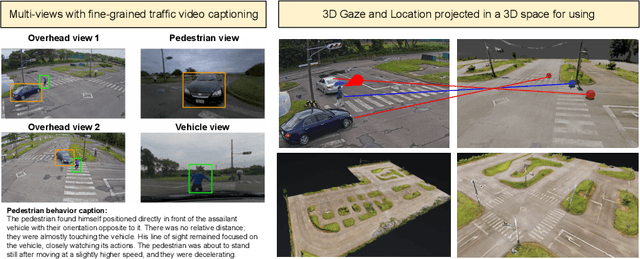
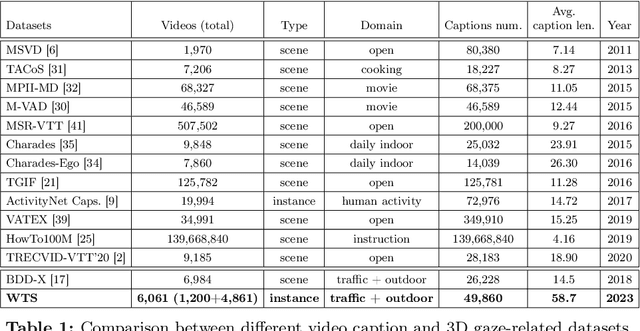
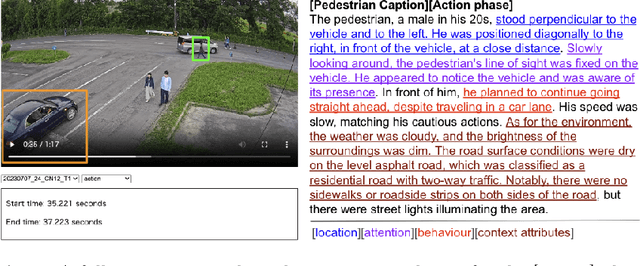
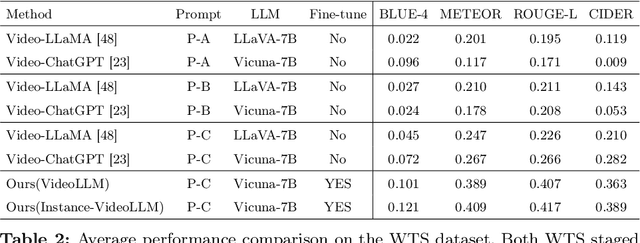
Abstract:In this paper, we address the challenge of fine-grained video event understanding in traffic scenarios, vital for autonomous driving and safety. Traditional datasets focus on driver or vehicle behavior, often neglecting pedestrian perspectives. To fill this gap, we introduce the WTS dataset, highlighting detailed behaviors of both vehicles and pedestrians across over 1.2k video events in hundreds of traffic scenarios. WTS integrates diverse perspectives from vehicle ego and fixed overhead cameras in a vehicle-infrastructure cooperative environment, enriched with comprehensive textual descriptions and unique 3D Gaze data for a synchronized 2D/3D view, focusing on pedestrian analysis. We also pro-vide annotations for 5k publicly sourced pedestrian-related traffic videos. Additionally, we introduce LLMScorer, an LLM-based evaluation metric to align inference captions with ground truth. Using WTS, we establish a benchmark for dense video-to-text tasks, exploring state-of-the-art Vision-Language Models with an instance-aware VideoLLM method as a baseline. WTS aims to advance fine-grained video event understanding, enhancing traffic safety and autonomous driving development.
The 8th AI City Challenge
Apr 15, 2024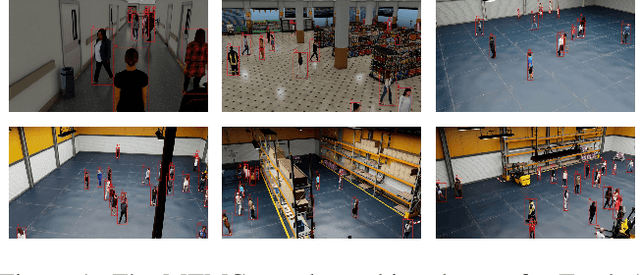
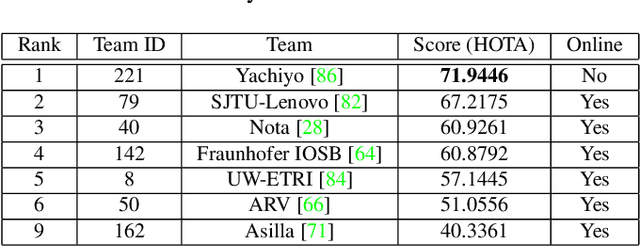


Abstract:The eighth AI City Challenge highlighted the convergence of computer vision and artificial intelligence in areas like retail, warehouse settings, and Intelligent Traffic Systems (ITS), presenting significant research opportunities. The 2024 edition featured five tracks, attracting unprecedented interest from 726 teams in 47 countries and regions. Track 1 dealt with multi-target multi-camera (MTMC) people tracking, highlighting significant enhancements in camera count, character number, 3D annotation, and camera matrices, alongside new rules for 3D tracking and online tracking algorithm encouragement. Track 2 introduced dense video captioning for traffic safety, focusing on pedestrian accidents using multi-camera feeds to improve insights for insurance and prevention. Track 3 required teams to classify driver actions in a naturalistic driving analysis. Track 4 explored fish-eye camera analytics using the FishEye8K dataset. Track 5 focused on motorcycle helmet rule violation detection. The challenge utilized two leaderboards to showcase methods, with participants setting new benchmarks, some surpassing existing state-of-the-art achievements.
 Add to Chrome
Add to Chrome Add to Firefox
Add to Firefox Add to Edge
Add to Edge